blackkite
Don't laugh, don't cry, don't even curse, but.....
- Joined
- 31 May 2007
- Messages
- 8,819
- Reaction score
- 7,715
If only we have the original drawing of 509........By the way - is the "Me 509" a real project or a postwar fake?
If only we have the original drawing of 509........By the way - is the "Me 509" a real project or a postwar fake?
By the way - is the "Me 509" a real project or a postwar fake?
A single wartime drawing, document, whatever...
I've just encountered information, the 509 was given birth in the 1970s by a certain book author angry that another authors just copied information from books or articles, without any archive research. And so his freshly invented story on the 509 was quickly multiplied in other publications...
I can't find that magazine. I am very curious, could you please give me some more details?Re: Messerschmitt Me 309 versions
A very interesting article about the Messerschmitt Me 309 is published in the August 2017 issue of the German magazine Klassiker der Luftfahrt. IMHO some unseen new pictures of the the flight tests are featured in this article.
You can also buy and download the article at their website.
Link: http://www.klassiker-der-luftfahrt....tt-me-309-die-letzte-09/734200/paidattachment
The magazine containing the Me 309 article you mention appears at this link:I can't find that magazine. I am very curious, could you please give me some more details?Re: Messerschmitt Me 309 versions
A very interesting article about the Messerschmitt Me 309 is published in the August 2017 issue of the German magazine Klassiker der Luftfahrt. IMHO some unseen new pictures of the the flight tests are featured in this article.
You can also buy and download the article at their website.
Link: http://www.klassiker-der-luftfahrt....tt-me-309-die-letzte-09/734200/paidattachment

Thank you.The magazine containing the Me 309 article you mention appears at this link:I can't find that magazine. I am very curious, could you please give me some more details?Re: Messerschmitt Me 309 versions
A very interesting article about the Messerschmitt Me 309 is published in the August 2017 issue of the German magazine Klassiker der Luftfahrt. IMHO some unseen new pictures of the the flight tests are featured in this article.
You can also buy and download the article at their website.
Link: http://www.klassiker-der-luftfahrt....tt-me-309-die-letzte-09/734200/paidattachment

07 Heft 07 2017
www.flugrevue.de

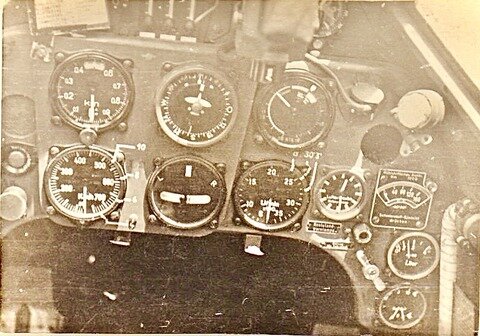
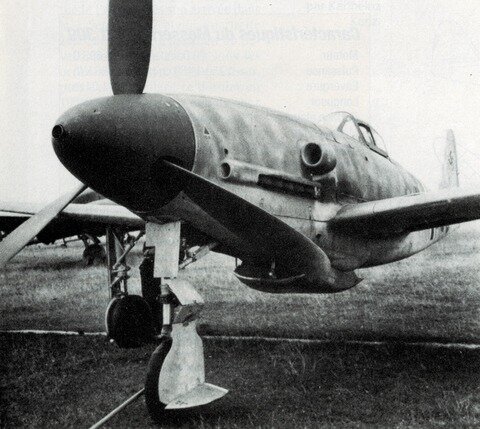

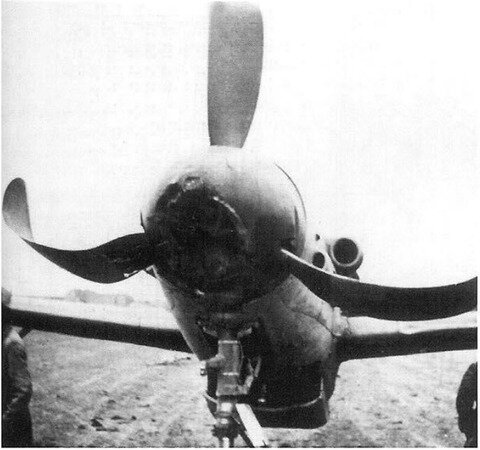

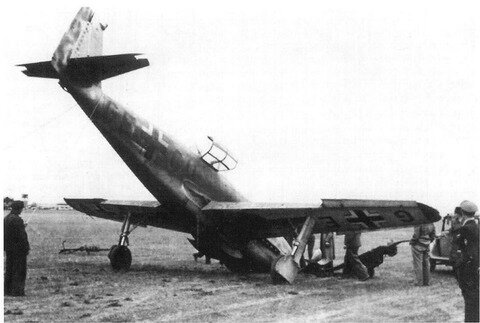
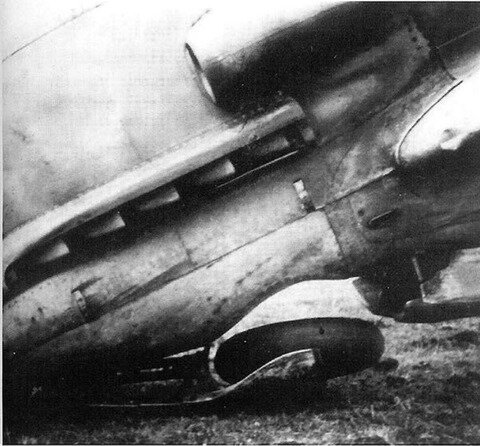

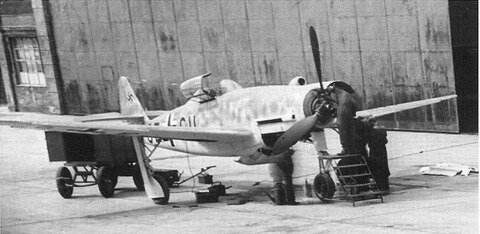

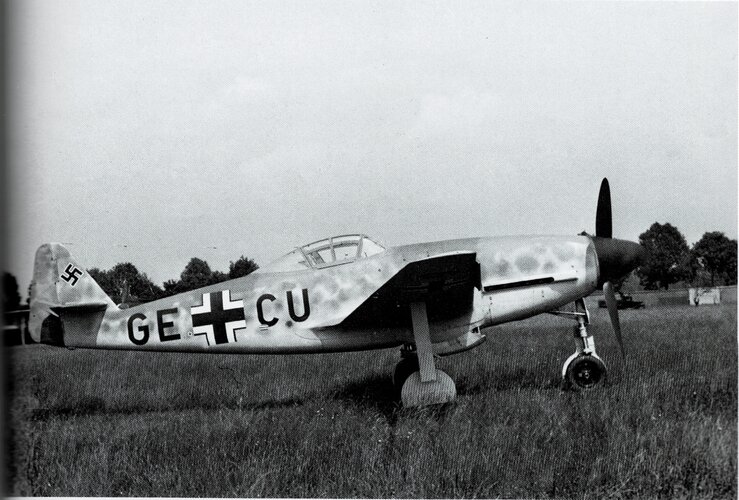
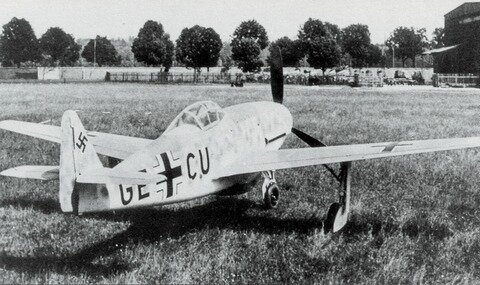
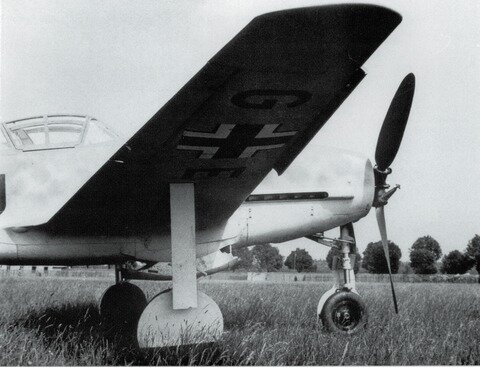
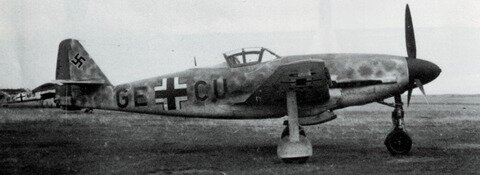
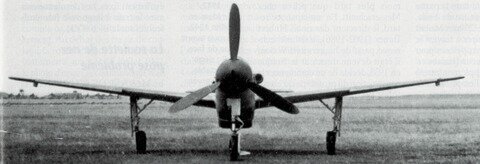
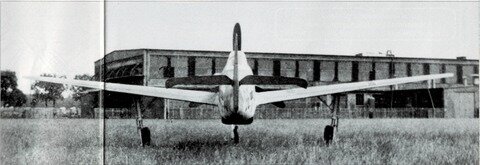


Yes.So both GE+CU and GE+CV crashed?
In the photo, the top propeller looks like that, but I'm not sure about the bottom two propellers.Are those external balance weights bolted to the propeller blade hubs?
Nope.Were these aircraft flown by the allies post war?
I think this is a tough question to answer. The performance of the overall wing is certainly dependent on the profile for these aircraft, however it is also heavily influenced by the other wing design parameters, such as overall wing area, taper, aspect ratio, twist (geometric and aerodynamic), dihedral, wing tip design etc.A practical question : Would this wing give the Me 309 an advantage over other aircraft ?
Just a question, why are you using the Mustang H profile ?I think this is a tough question to answer. The performance of the overall wing is certainly dependent on the profile for these aircraft, however it is also heavily influenced by the other wing design parameters, such as overall wing area, taper, aspect ratio, twist (geometric and aerodynamic), dihedral, wing tip design etc.
We would need to see the distribution of lift for the Me 309 wing to get an indication of the wing's performance and that requires a different set of simulations.
With these caveats out of the way, to me, the Me 309 profile alone indicates this:
1. It does not have a high cl, so it does not generate a lot of lift at low speeds
Discarding the other parameters, this indicates that we need a well designed flap system for takeoff and landing as well as low speed climb.
Contrast this with the Clark-YH profile of the Hurricane (as stand in for an older, very popular airfoil).
A much thicker profile with higher cl, so we can expect the lift provided at low speeds to be higher. This (again discarding all other influence factors) enables lower takeoff and landing speeds, as well as higher rate of climb at low speeds. This will also aid with low speed turning to a certain extent.
2. The Me 309 profile seems a bit more sensitive towards high AoA separation (compared to Clark-YH). This can indicate a lmitation in instantaneous turn rate compared to airfoils with a rounder leading edge. It might also necessitate the presence of slats for high AoA situations such as maneuvers or (to a certain extent) landing. And indeed the Me 309 was designed with slats.
3. However, and I suspect this to be the key design driver, at moderate AoA (I did a rough comparison at 2°) the lift over drag is significantly higher than for the Clark-YH. This indicates less profile drag and thus enables reaching higher speeds or attaining a longer cruising range. This effect is of course more pronounced for the P-51 H profile, which we know to have an even better range and higher max. speed compared to the 309. The critical Mach-number of the Me 309 profile is also lower than for the Mustang H profile (see the higher cp-max in my plots), so in a high speed dive, the wing might become a limitation at lower speeds compared to the P-51 H (assuming transonic drag rise from other regions of the aircraft does not prohibit reaching these speeds).
Putting everything in a nutshell: it might offer an advantage for high speed and cruise over some aircraft but has downsides that need to be mitigated via aides such as slats at lower speeds. Considering the fact, that the 109 already needed all of these aides anyways, I would dare say the Me 309 profile is designed well enough to not be considered a downside of the aircraft.
I understand correctly that the Me 309 wing profile was "more laminar" than the P-51D profile ? I know I'm simplifying greatly, but purely from a wing profile perspective would that be the case ?Because, as a NACA 6-series profile, it is an example of a very well designed and (at the time) modern profile. It is also often used as the posterchild of practical laminar flow profiles, since it worked so well. So in a way, this profile represents the gold standard of its time.
First of all, sorry for the very late response. I have been a bit busy lately and did not find the time to generate a decent dataset of the P-51 D profile and re-run it in X-FOIL. That is what I would need in order to provide a good answer to your question. Alas I still have not done that.I understand correctly that the Me 309 wing profile was "more laminar" than the P-51D profile ? I know I'm simplifying greatly, but purely from a wing profile perspective would that be the case ?
Thank you, what do you think of the combination of leading edge slots and the laminar profile of the Me 309 wing ?First of all, sorry for the very late response. I have been a bit busy lately and did not find the time to generate a decent dataset of the P-51 D profile and re-run it in X-FOIL. That is what I would need in order to provide a good answer to your question. Alas I still have not done that.
With the uncertainty of the P-51 D profile data I have, any tendency I could give would be meaningless. I will try to update the data as soon as possible.
